Creating a relaxing garden space can be one of the most rewarding projects during retirement.
It offers a chance to embrace nature, unwind, and cultivate a personal sanctuary that promotes well-being.
The right garden can truly enhance one’s quality of life, making it a perfect place to enjoy peaceful moments and even entertain friends.
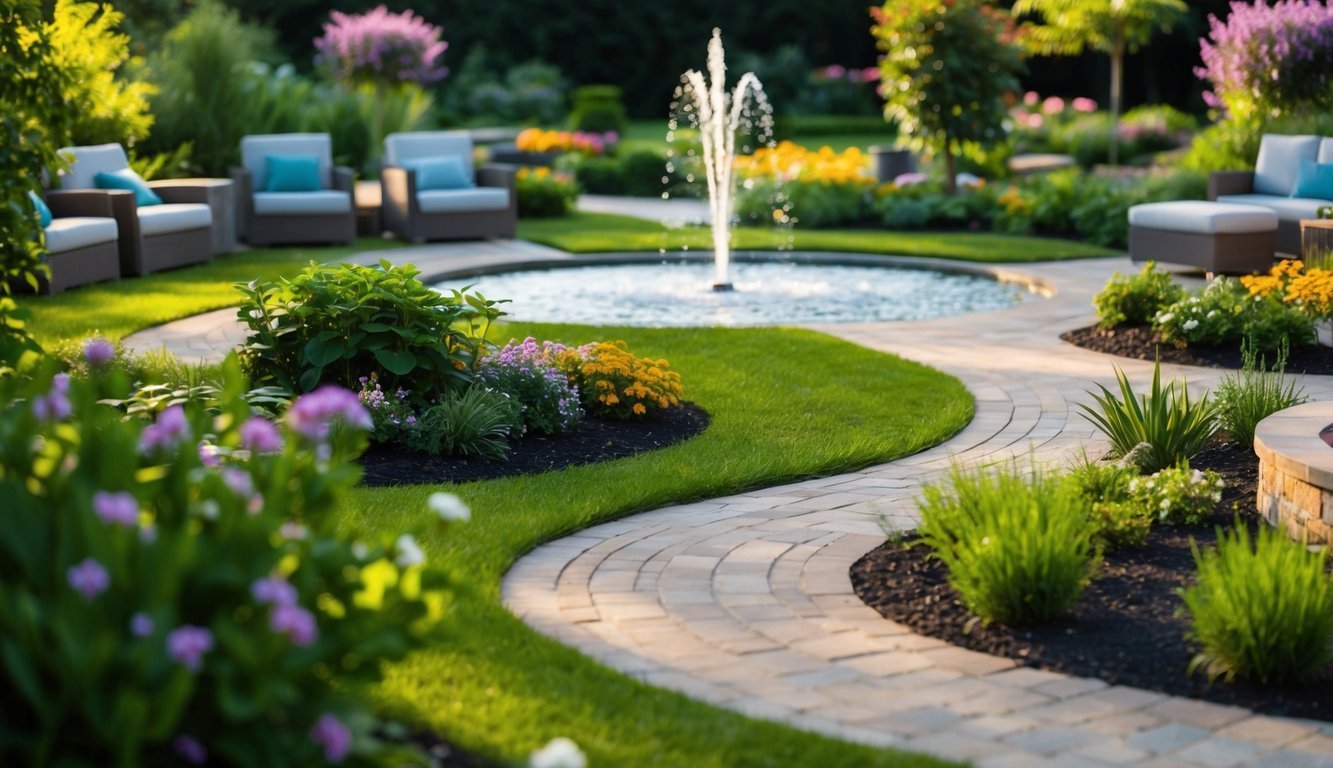
In this article, I’ll share tips that can help you design a calming garden that reflects your personality and needs.
Whether you have a large backyard or a small balcony, these ideas can transform your outdoor area into a space where you can relax, reflect, and recharge.
Add a Cozy Hammock
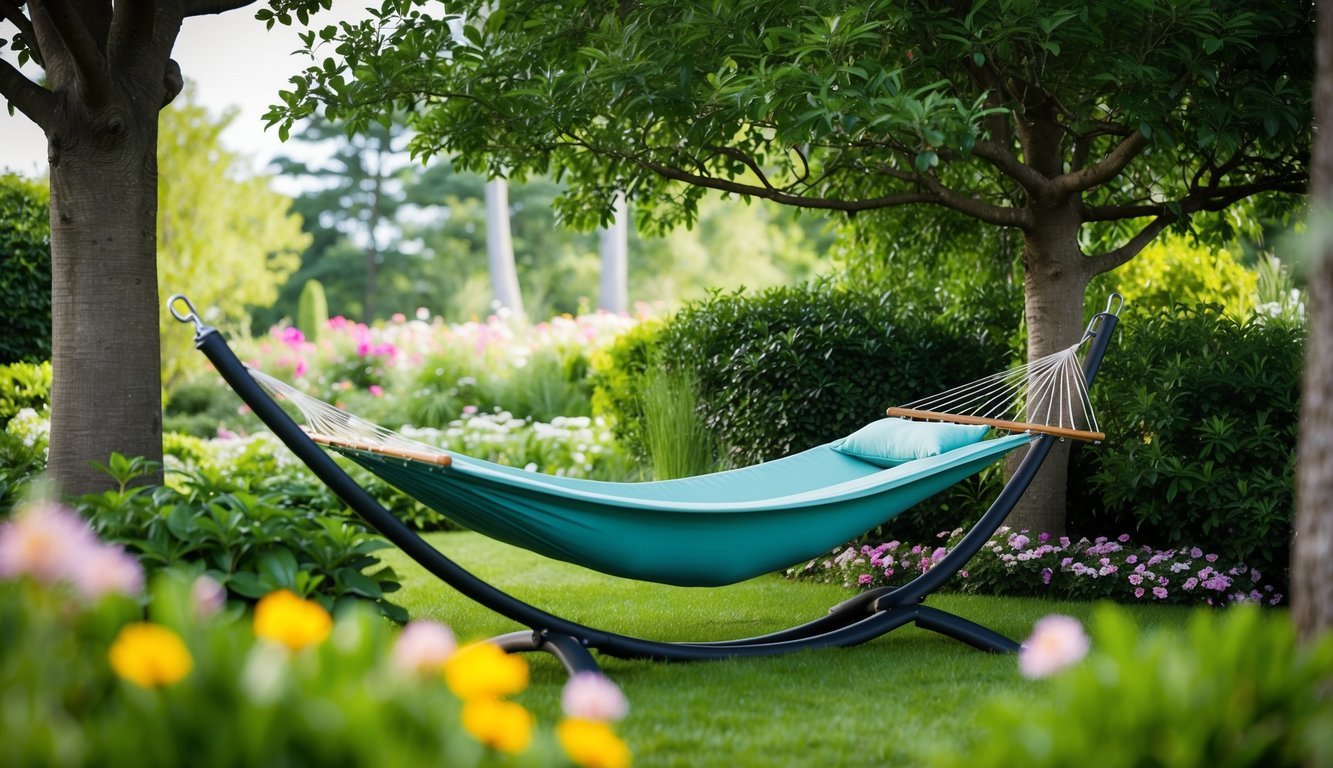
I find that adding a hammock to my garden transforms it into a relaxing oasis.
It’s my personal escape spot where I can unwind with a book or take a short nap.
Choosing the right location is key.
I look for sturdy trees or posts spaced about 10 to 15 feet apart.
This ensures I have enough room for the hammock while maintaining a cozy feel.
When I hang my hammock, I use durable tree straps to protect the bark.
This option is gentle on the trees and easy to adjust.
To add a touch of charm, I like stringing up waterproof lights around the area.
Pillows can make it even cozier.
I often throw in a couple of colorful cushions to match the garden’s theme.
It turns the hammock into an inviting space for relaxation.
Having a comfortable hammock encourages me to spend more time outdoors.
Whether I’m listening to the birds or enjoying a gentle breeze, it’s the perfect way to embrace nature.
Incorporate Soothing Fountains
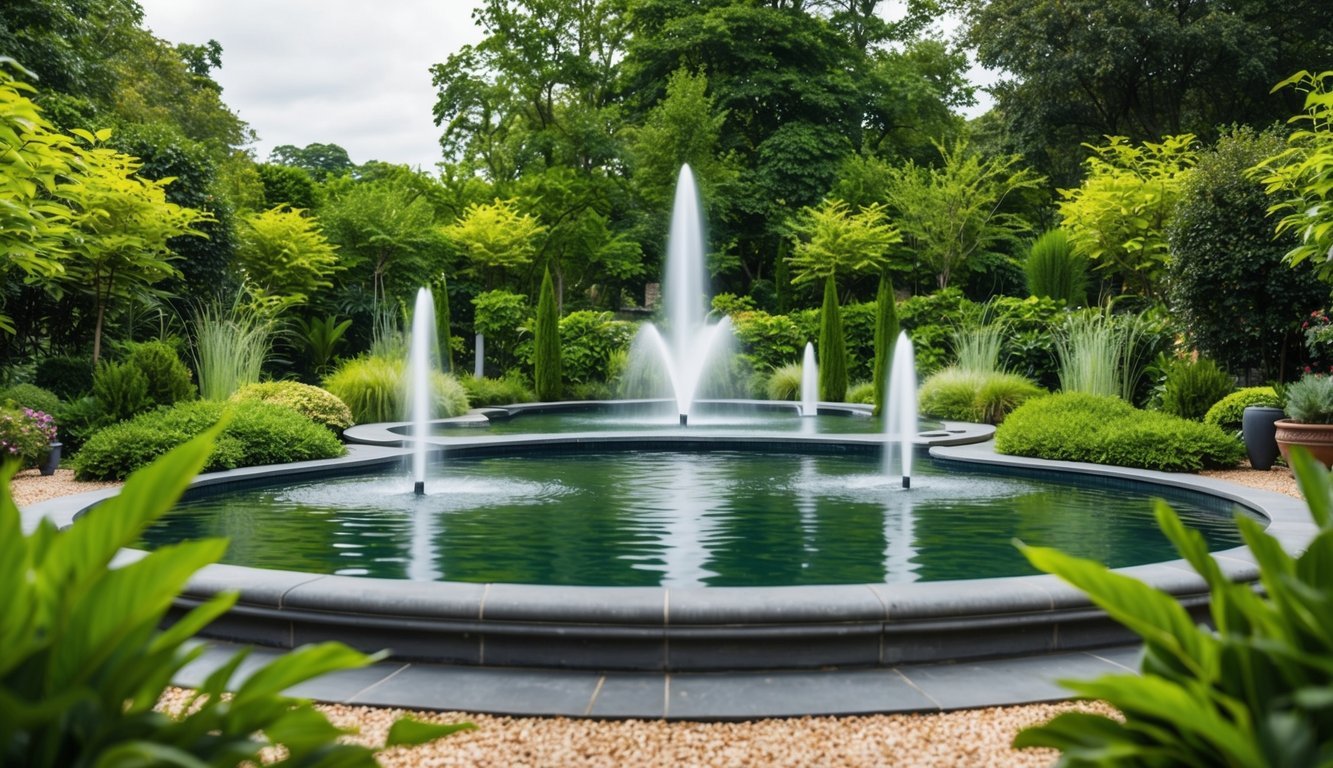
Adding a fountain to my garden has made such a difference.
The gentle sound of flowing water creates a peaceful atmosphere that helps me unwind.
I love how fountains serve as a focal point in the garden.
They draw the eye and invite relaxation.
It’s a simple way to enhance the overall ambiance.
When choosing a fountain, I consider size and style.
A small, elegant design works well in cozy spaces, while larger ones can dominate more open areas.
Either way, the right fountain complements my garden’s character.
I also appreciate the therapeutic sound of water.
It drowns out nearby noise and makes my outdoor space feel like a personal retreat.
Maintaining the fountain is key to keeping it serene.
Regular cleaning and checking the pump help to ensure it runs smoothly.
Incorporating a soothing fountain has truly transformed my garden into a tranquil haven.
It has become a spot where I can connect with nature and find calm in my day-to-day life.
Plant Fragrant Lavender
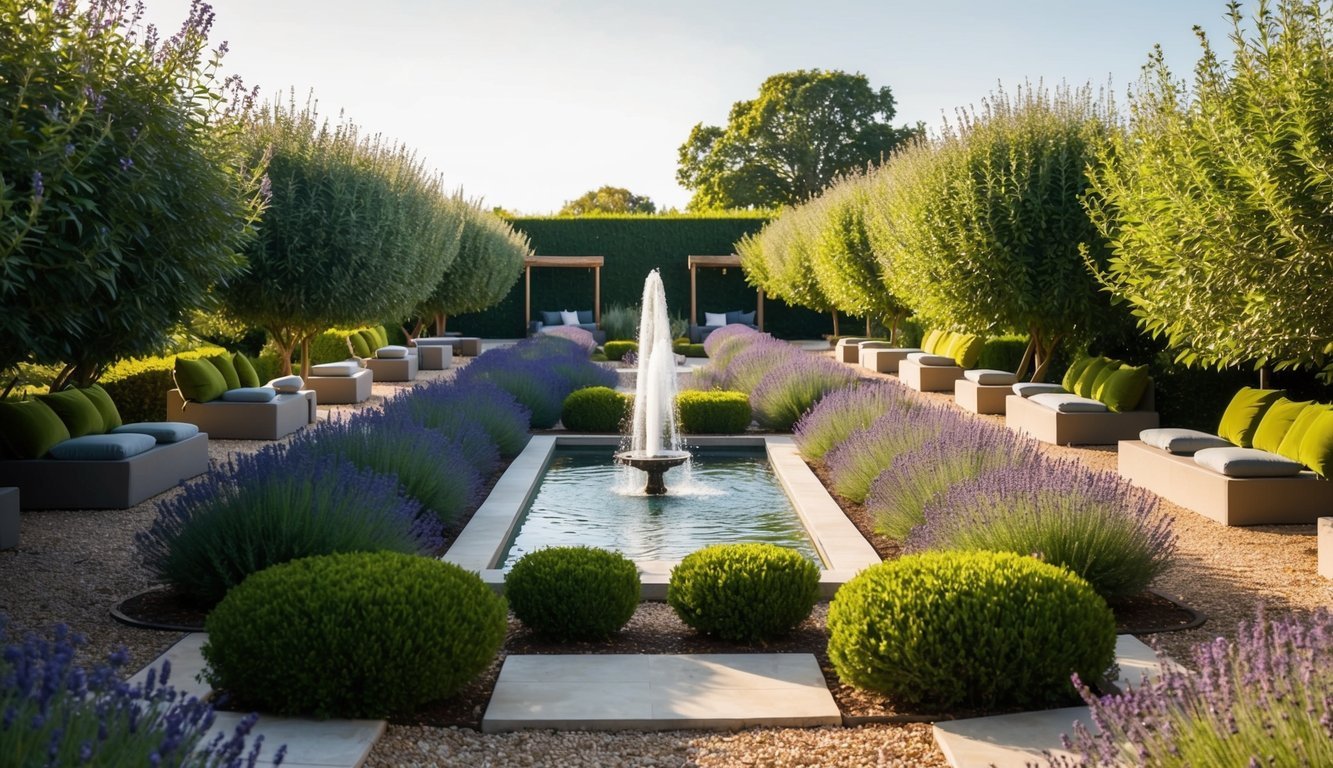
I love incorporating lavender into my garden for its wonderful fragrance and beauty.
It adds a calming vibe that makes the garden feel like a peaceful retreat.
When choosing lavender varieties, I often go for Lavandula angustifolia, known for its lovely scent and attractive spikes of purple flowers.
It’s a hardy perennial that thrives in many climates, making it a reliable choice.
For planting, I ensure my soil is well-draining and slightly alkaline.
I usually mix in some compost to promote drainage.
Lavender doesn’t need much fertilizer, as it prefers lean soil.
Spacing is essential.
I plant my lavender about 18 inches apart to allow for air circulation, which keeps the plants healthy.
Once established, lavender is drought-tolerant, so I water it sparingly.
I find that the aroma of lavender is especially soothing when I brush against the plants or when the wind carries its scent through the garden.
It’s a delightful addition that enhances my outdoor space.
4) Install Soft Garden Lighting
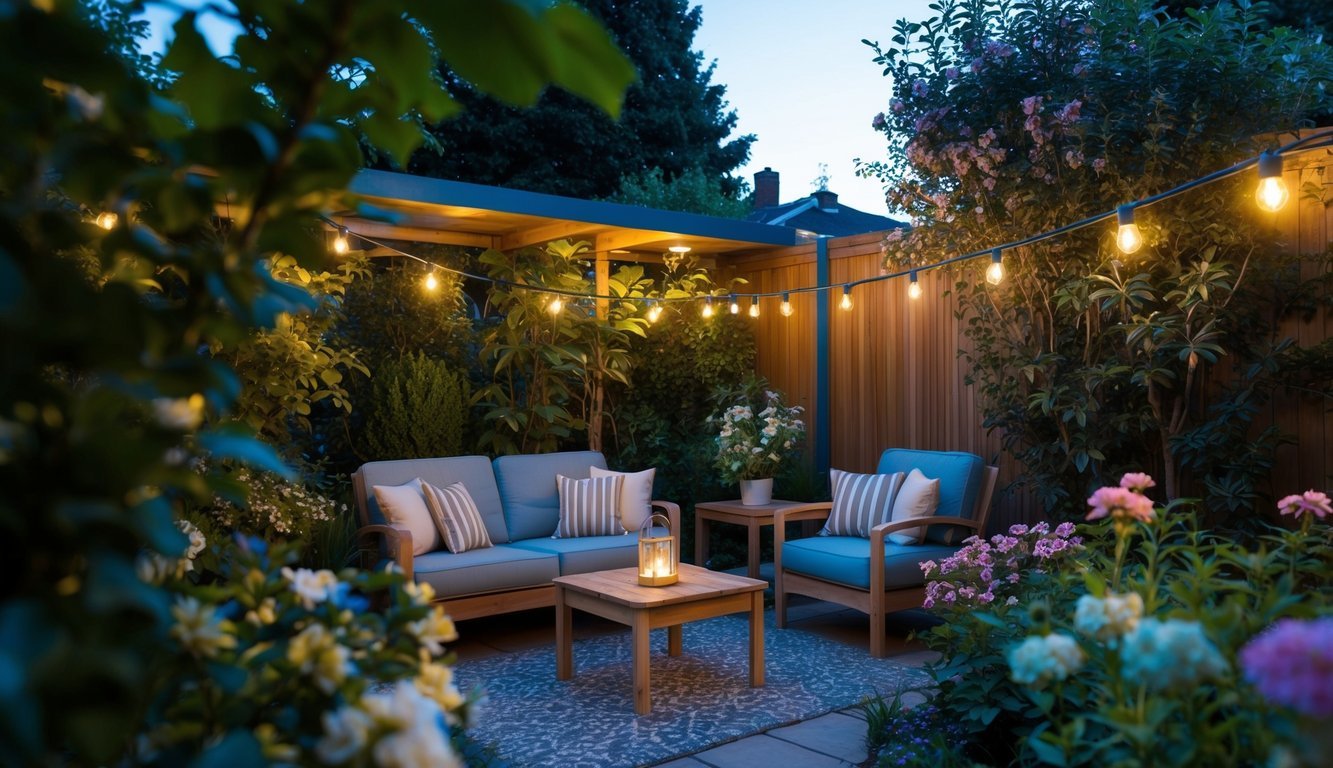
When I think about creating a relaxing garden space, soft lighting is essential.
It sets the mood for peaceful evenings outside.
I like to use warm, ambient lights that create a cozy atmosphere.
String lights or lanterns work wonderfully for this.
They add charm without being too harsh.
I also focus on placement.
I aim to position lights along pathways and near seating areas.
This not only enhances safety but also guides me through the garden at night.
Solar-powered options are great as they require no wiring and are energy-efficient.
I appreciate how they charge during the day and illuminate my garden when the sun goes down.
Another tip is to mix different types of lighting.
Soft spotlights can highlight my favorite plants, while fairy lights add a whimsical touch.
Motion-sensor lights can also be useful for security, giving me peace of mind while enjoying my space.
By choosing low-glow options, I ensure the ambiance remains tranquil and inviting.
5) Create a Meditation Corner
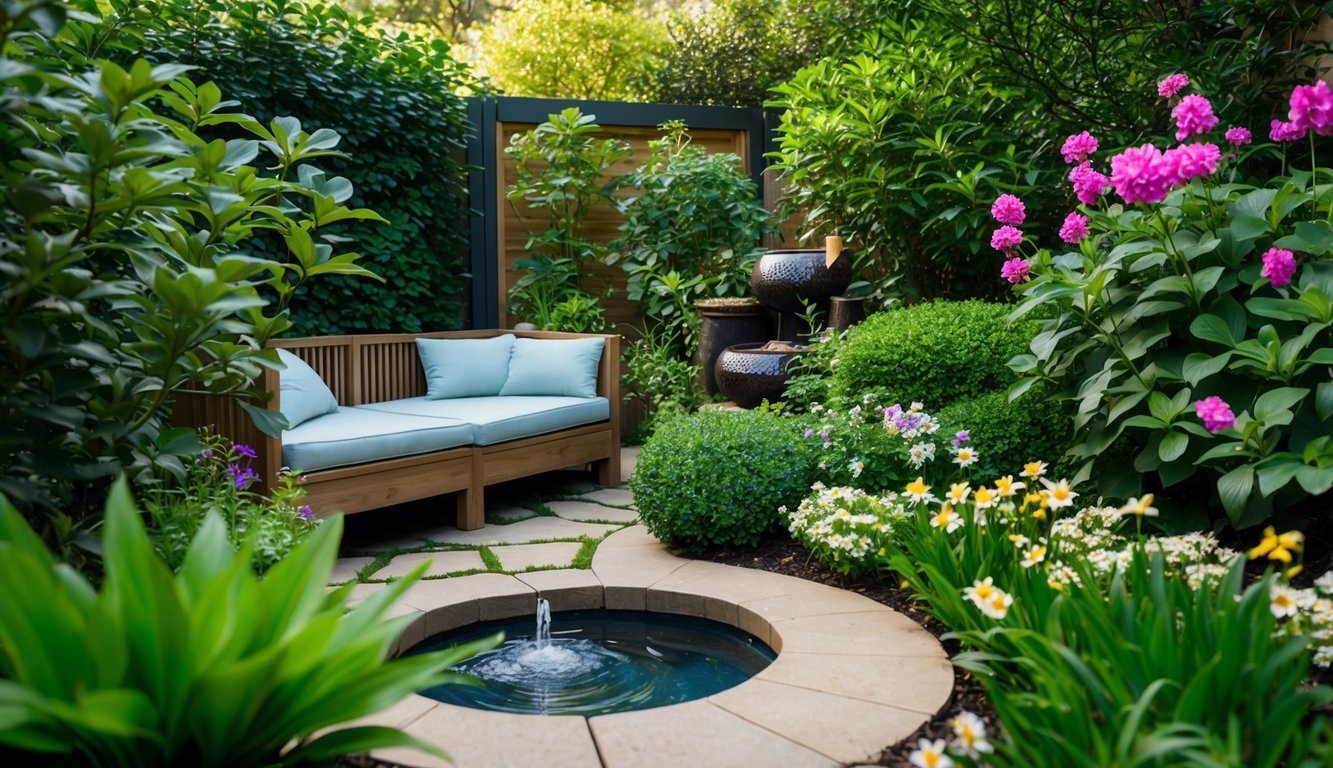
Designing a meditation corner in my garden has been one of the most rewarding ideas.
I wanted a space where I could unwind and find peace.
First, I chose a quiet spot away from distractions.
A corner with natural shade works best for me.
Next, I added comfortable seating.
A simple bench or a few cushions create a cozy atmosphere.
I love incorporating soft fabrics that invite me to sit and relax.
Bringing in elements of nature is essential.
I included a small water feature for soothing sounds and plants that resonate with calmness.
Flowering plants or fragrant herbs make the space vibrant.
To add a touch of intimacy, I draped light fabrics or installed a pergola.
This creates a sheltered nook that feels like a personal retreat.
Finally, adding a few personal touches makes it special.
I include items like stones, candles, or artwork that inspire mindfulness.
This corner has become my go-to spot for reflection and relaxation.
It’s where I recharge and connect with nature.
6) Build Raised Garden Beds
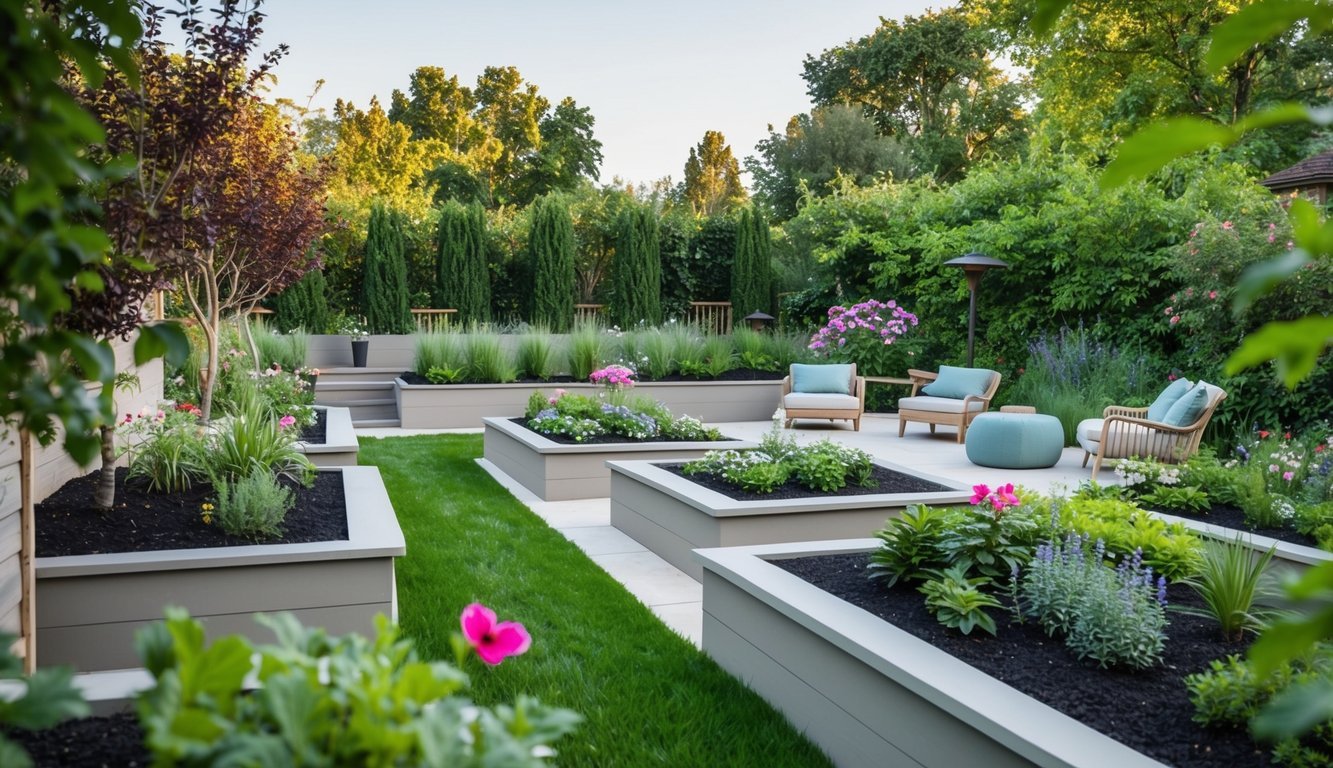
Building raised garden beds has been a game-changer for my gardening space.
They’re easy to construct and offer great benefits, especially for a relaxing garden.
I enjoy how raised beds help define my garden area.
They allow for better soil and drainage, which is crucial for healthy plants.
Plus, I can choose materials that fit my style, from wood to composite options.
When I design my beds, I consider height and accessibility.
A height that suits my needs makes gardening easier on my back.
I also position them in a spot that gets plenty of sunlight, which my plants love.
The layout can be as creative as I want.
Square, rectangular, or even circular beds can add interest.
I sometimes group them together for a lush, garden-like feel.
As I work in my raised beds, I feel more connected to the plants.
Having my hands in the soil is therapeutic.
These beds not only enhance the design of my garden but also provide a relaxing and enjoyable gardening experience.
7) Oh-So-Soft Outdoor Cushions
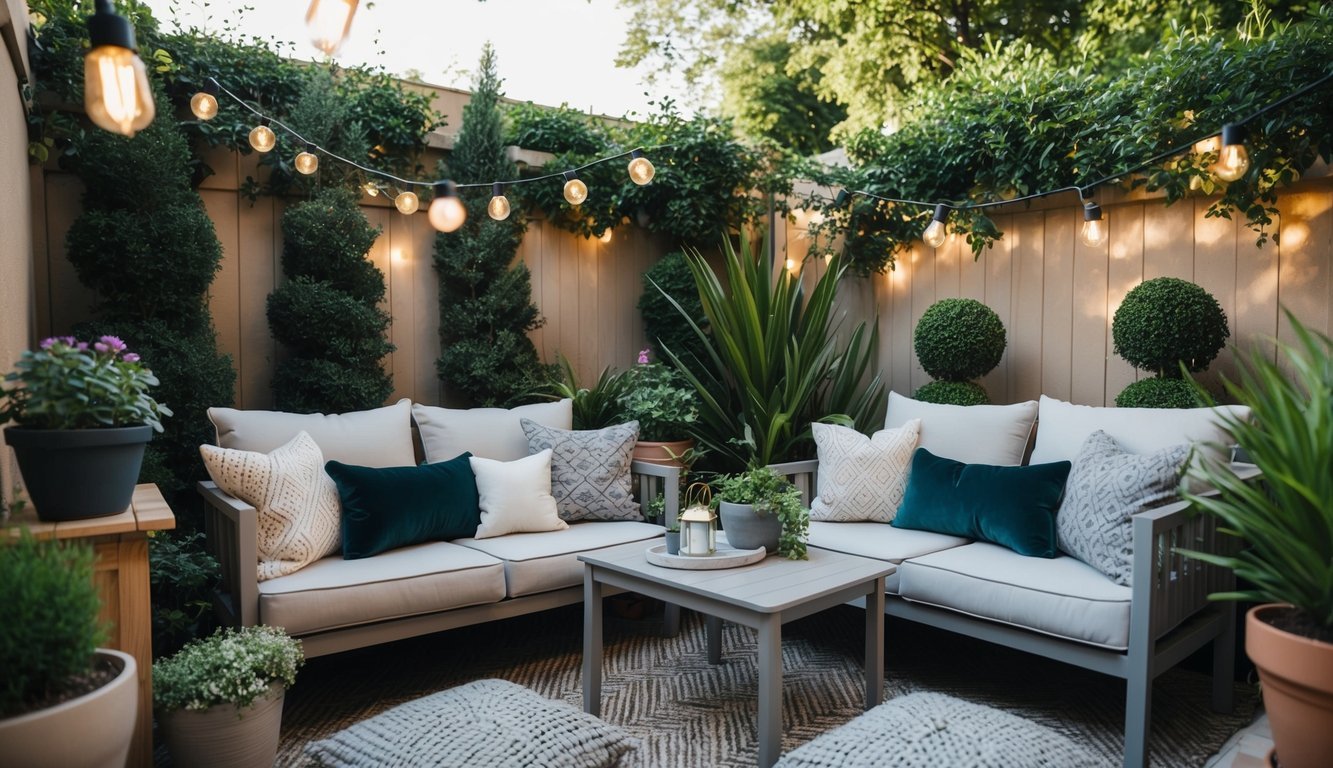
When I think about comfort in my garden space, outdoor cushions come to mind.
They really make a big difference in how inviting my seating areas feel.
Choosing soft, durable fabrics is key.
These cushions need to withstand the elements, so I look for materials that resist fading and moisture.
Arranging larger cushions at the back provides support, while smaller ones in front are perfect for extra comfort.
I love to mix colors and patterns, adding a personal touch to my garden.
Not only do they enhance comfort, but outdoor cushions also elevate the entire look of my space.
They bring in a splash of color and style, making the area feel more like an extension of my home.
Having a variety of cushions allows me to change things up whenever I want.
It’s an easy way to refresh the vibe of my garden without a complete overhaul.
8) Use Calming Color Schemes
When designing my garden, I always focus on calming color schemes.
Soft blues, muted greens, and earthy neutrals create a serene environment.
These shades promote relaxation and tranquility, perfect for a retirement garden.
I find that incorporating just a few pops of bright color adds interest without overwhelming the senses.
A few vibrant flowers mixed in with softer tones can really brighten up the space.
Using the color wheel as a guide helps me create harmony.
I avoid clashing colors that might create visual chaos.
Instead, I opt for shades that complement one another.
Textures also play a role in my color scheme.
I layer plants with different foliage colors and shapes to provide depth.
This combination of calming colors and varied textures creates a peaceful retreat.
Curved lines in garden beds often feel more inviting than sharp angles.
I like to arrange my plants in gentle sweeps, drawing the eye along a natural path.
This design approach brings a sense of ease and comfort to my garden space.
9) Hang a Bird Feeder
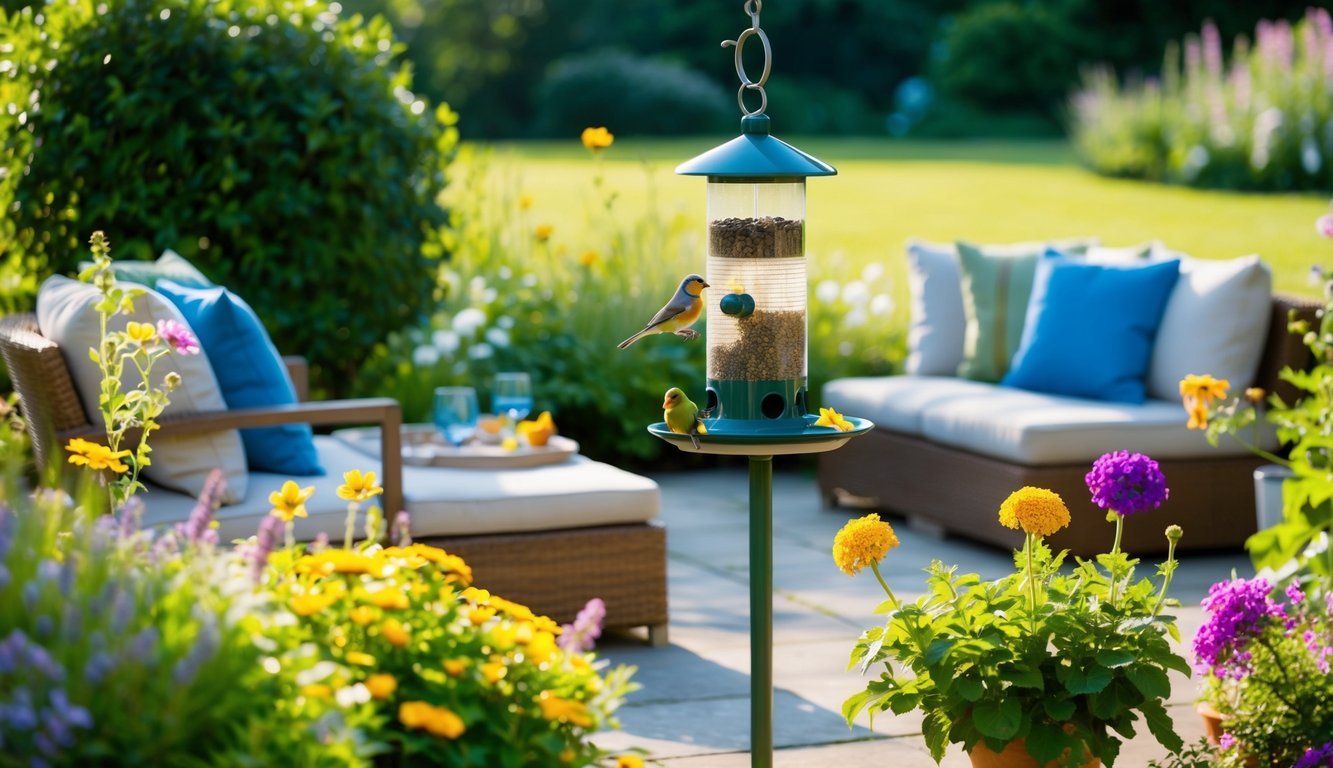
Hanging a bird feeder can transform my garden into a lively haven.
It attracts various bird species, filling my outdoor space with their cheerful songs and colors.
I start by choosing a suitable location.
It’s essential to hang the feeder at least five feet high to keep it safe from curious cats.
For hummingbirds, I can place the feeder a bit lower since they feed while hovering.
Creating a simple hanging setup is fun.
I can use a sturdy branch, tie a rope, or even attach it to a fence post.
If I’m feeling creative, I might try DIY feeders made from recycled materials.
A plastic bottle or jar can easily be repurposed into a feeder.
Filling it with birdseed is straightforward.
I can replenish the seeds regularly to keep the birds coming back.
I also make sure the feeder is away from windows to prevent any collisions.
Watching the birds visit is not just relaxing, but it also brings a sense of connection to nature, adding to my garden’s peaceful atmosphere.
10) Mix in Aromatic Herbs
I love incorporating aromatic herbs into my garden design.
They not only add beauty but also delightful scents that create a relaxing atmosphere.
Herbs like lavender, basil, and rosemary are great choices.
I find that planting them near pathways or seating areas enhances the sensory experience when I walk by or sit down to relax.
Container gardening works well too.
I can easily move pots around, changing the layout to suit my needs.
This flexibility allows me to create different scent experiences throughout the garden.
Companion planting is also beneficial.
Pairing herbs like basil with tomatoes not only promotes growth but also enriches the garden’s appeal.
Incorporating aromatherapy plants into my space invites me to unwind and enjoy nature.
By strategically placing these herbs, I can maximize their therapeutic benefits, making my garden a true sanctuary.
Design Principles for a Relaxing Garden
Creating a relaxing garden space is all about maintaining a sense of balance and incorporating elements that soothe.
Simple design principles help create an inviting atmosphere perfect for retirement.
Balance and Harmony
I find that balance and harmony are crucial in garden design.
To achieve this, I start by selecting plants of varying heights, colors, and textures.
This diversity adds visual interest while keeping the space cohesive.
Tips for Balance:
- Group plants in odd numbers for a natural look.
- Use a color palette that complements your home and surrounding environment.
- Create visual symmetry with pathways, seating areas, or focal points.
I also consider the layout.
Curved paths and beds can make the space feel more inviting.
Incorporating both dense plantings and open areas allows for movement and exploration while promoting tranquility.
Incorporating Water Features
Water features can elevate a garden’s calming effect.
The sound of flowing water is incredibly relaxing and adds a serene backdrop to my outdoor space.
Water Feature Ideas:
- Birdbaths: Attract local wildlife and provide a gentle sound.
- Small Fountains: They create a soothing ambiance and can be placed in seating areas.
- Koi Ponds: With vibrant fish, these can become a focal point for reflection and relaxation.
When designing, I also think about placement.
A water feature should be easily visible and audible from key areas, like seating spots.
Enhancing it with surrounding plants enriches the sensory experience, creating a peaceful retreat.
Choosing the Right Plants
Selecting the right plants is essential for creating a relaxing garden space.
I aim to choose options that are not only beautiful but also manageable and supportive of ongoing seasonal changes.
Low-Maintenance Options
When thinking about low-maintenance plants, I often gravitate toward those that require minimal care yet deliver maximum visual appeal.
Some great choices include sedums, lavender, and ornamental grasses.
-
Sedums – These succulent plants thrive in various conditions and require little watering. They come in diverse shapes and colors, adding texture without demanding too much attention.
-
Lavender – Not only is lavender lovely, but its fragrance can also enhance a peaceful atmosphere. It’s drought-resistant and attracts pollinators, which is a nice bonus.
-
Ornamental Grasses – Grasses like Miscanthus and Pennisetum create movement in the garden. They are hardy and contribute to a relaxed aesthetic.
These plants let me spend more time enjoying my garden rather than working in it.
Seasonal Color Changes
Incorporating plants that provide seasonal color shifts adds vibrancy and interest to my garden year-round.
I focus on a mix of perennials and shrubs to achieve this.
Spring brings vibrant blooms from daffodils and tulips.
I love planting these in clusters to create a stunning visual impact.
In summer, plants like coneflowers and daylilies flourish, offering rich colors that thrive during the warmer months.
Their ability to multiply over time means more beauty without much effort from me.
As autumn arrives, I enjoy the warm hues of Japanese maple and sedums, which transition beautifully.
Lastly, in winter, even bare branches can be striking—especially if I include evergreens.
By selecting a diverse mix of plants, I keep my garden feeling fresh and inviting throughout the seasons.

